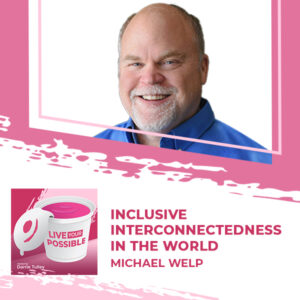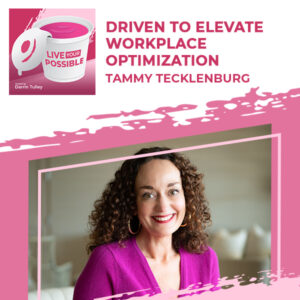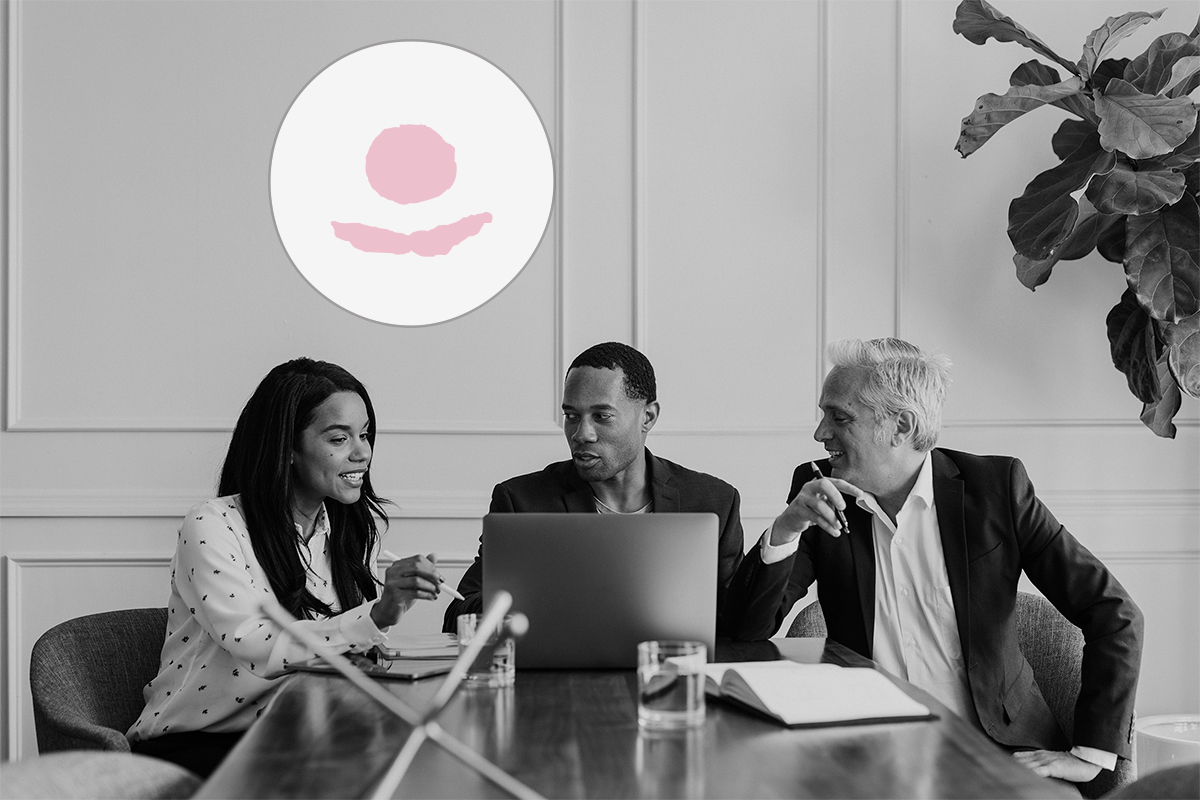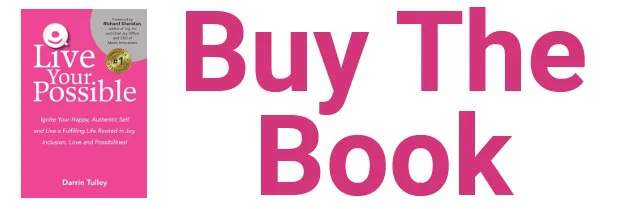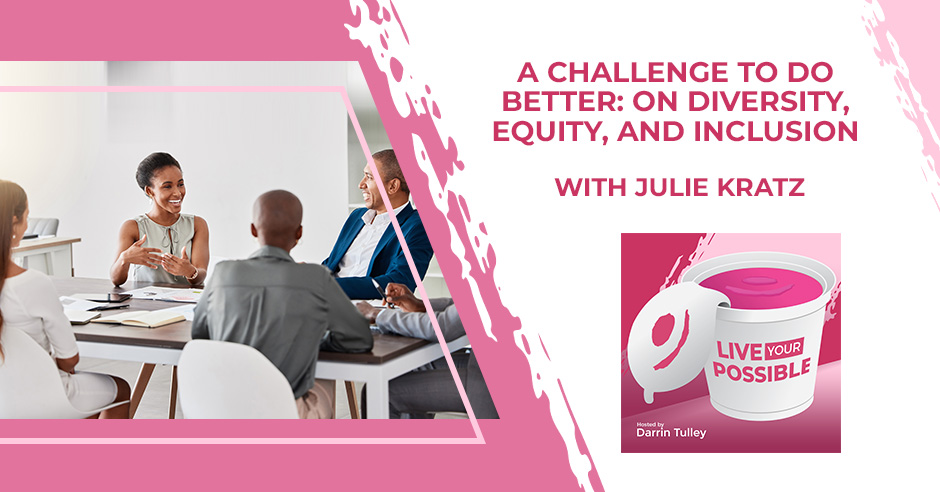
More than ever, organizations recognize the importance of Diversity, Equity, and Inclusion. So much so that sometimes, they are seen merely as buzzwords. It is time we amend that and reclaim their true value. In this episode, Darrin Tulley interviews Julie Kratz, a highly-acclaimed TEDx speaker, and inclusive leadership trainer, about how you can make a real impact with DEI one relationship at a time. Brace yourself for a conversation that challenges you to open your mind and appreciate new perspectives regardless of where you are on your journey toward inclusivity. Learn about allyship and the importance of seeking diverse voices to expand your thinking while fostering meaningful connections. Challenge yourself to be judgment-free and embrace listening without combatting, reacting, or judging. By staying true to yourself and welcoming endless possibilities, you can transform your life and contribute to personal and organizational growth.
—
Watch the episode here
Listen to the podcast here
A Challenge To Do Better: On Diversity, Equity, And Inclusion With Julie Kratz
Welcome, Julie Kratz. She is a highly acclaimed TEDx speaker and inclusive leadership trainer who led teams and produced results in Corporate America. After experiencing many career pivot points of her own, she started her own speaking business to help leaders be more inclusive, promoting diversity, inclusion, and allyship in the workplace.
Julie helps organizations foster more inclusive environments. She is a frequent keynote speaker, podcast host, executive coach, and author of six books. She holds an MBA from the Kelly School of Business at Indiana University as a certified unconscious bias trainer. Julie and I had an open discussion about diversity, equity, and inclusion. Are you ready to open your mind and hear all the buzzwords that might set you off? Let’s sit and learn with an open heart to learn more about these words and see your part in things and how you can make a real impact one relationship at a time. Enjoy the show.
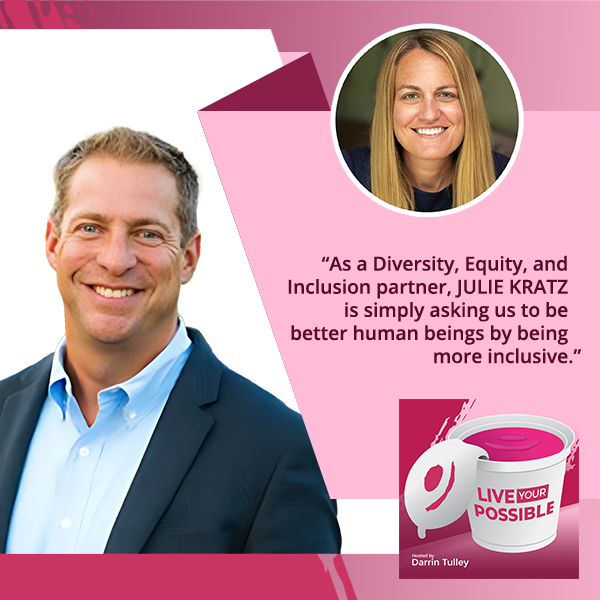
Julie Kratz, welcome to the show. I’m excited to talk to you about how you are doing and what you are up to these days. You have this cool company name called Next Pivot Point. Let’s jump in right there. What is that name all about? Where does it come from?
It has been a journey. I’m entering year nine of business. When I first started out as a White, straight, cisgender, and able-bodied woman, I thought my voice in this diversity space had to do with gender. It was at the same time that I was at a mid-career pivot point of my own making, leaving corporate and starting my own business. I was comparing notes with other women.
As they were sharing their challenges with me and as I wrote my first book based on those interviews, they shared, “I didn’t feel like the workplace includes me. I don’t feel like I am fully seen and heard. I feel invisible. I’m not sure this is what I want to do with my life. There has got to be more.” That is where Pivot Point came in. That was the title of my first book.
Since then, what I’ve realized was that part of business ownership is creating a brand and owning the domains and social handles. While I couldn’t get pivot point, I could get next because, at the same time, women now as allies and in the diversity work I have expanded into over the last several years, people are asking, “What is next?” People often come to us and my team, “What is next for diversity? What is next for gender? What is next as hopeful allies from a racial perspective?” That is what I love to research, study, write, talk, and do keynotes about. That is where Next Pivot Point was born.
Did you have some personal pivot points of your own that got you to go this path when you think about diversity, equity, inclusion, and what other words are coming up next?
Yeah. I spent twelve years in a corporate environment, lots of different industries, and functional areas. I got my MBA. In all of those experiences, it was very common that I was the only woman in the room, especially as I ascended into leadership roles. It was common that I managed men. There wasn’t a lot of other diversity on those leadership teams either.
My pivot points were these moments of realization. I thought the workplace was about equity and everyone has an equal chance. This myth of marriage-theocracy that was ingrained in our culture. I came to the realization that it isn’t true. It is a myth. What if we could do better? What if we could create a workplace that worked for everyone? That continues to be a Utopian vision of mine.
There are simple practices, mindsets, and behaviors that people can do to cultivate a culture of inclusion. No one is going to be perfect. I’m not perfect. It’s progress over perfection. I constantly make mistakes. That is how I learn and grow. What we are asking people to do is to be better. Can we respect humans in the workplace? Can we ensure that diverse perspectives feel welcomed? These are baseline things that are woefully and painfully behind in most corporate settings. You ask folks those questions and you get scores of 30% to 40% of folks feel those things. Fairness, respect, and equity are natural human values that we have. They don’t start and stop in the workplace.
Why do you think we have gotten to that place where it is only 30% to 40%? What do you think has happened?
The workplace was designed by one demographic for one demographic. Not a lot has changed in the last 80 years. In the post-World War II era, the modern workplace was born. If anyone has watched the show Mad Men, I lived out in the ‘90s. I don’t know how much has changed based on what I see. As a consultant on the outside, I don’t think it is as stark. It may not be as overt as it was then.
When you create a workplace that assumes us as caregivers at home, the man as the provider, and a segregated White, especially for more of the white-collar workforce, it is going to serve and behoove that demographic. That is still how it functions now, and how it is reinforced now is wealth and leadership are concentrated in that demographic. Ninety-plus percent of wealth is controlled by White men in the world. That is the same amount of CEOs of Fortune 500 companies. Even as you look down to the next tiers of leadership, women and folks of color are low representation, mid-twenties percentile at best.
When you don’t have people leading in control of power and wealth in a capitalist society, it leads to decisions that reinforce that power staying with that small group of people. It has gotten considerably stronger and more concentrated over the last few decades than people realize. People know the middle class is shrinking, but what they don’t understand is that wealth continues to tighten. It is not sustainable for us to continue to concentrate wealth and power in the hands of a few. It is not a representation of democracy anymore.
It is influencing our world and what shapes us as far as what we buy, watch, learn, and believe systemically across the board. I had to drink the Kool-Aid over the years until I had my own realization that I was pushing away people, pushing away differences, and wasn’t looking at equality as openly as I could or should. There’s a lot of power, beauty, and possibilities in that.
This reminds me of your TED Talk. I loved your TED Talk from a couple of years ago about fit in or get out. I love your stories about construction clothing. At least the boots and some other things were only in male sizes. It reminds me of a lot of different things. I’d love to hear a little bit more about the gender equality movement, what you’re doing there, and how that is coming to fruition from your talk.
I appreciate you watching the Talk, and I’d love any feedback on that. There was a lot of work to get those TED Talks across the finish line. Delivering it one week before the world shut down with a pandemic was not ideal timing for that. Where we’re at with gender is sad. I think it has gotten a little bit better, but at one point during the pandemic, we had record-low participation of women in the workforce predating the 1980s. It is like we went backward because we all know what happened. Kids are home. They need to be homeschooled.
I heard many stories of wonderful people I know where the man was like, “No, that is your job.” It was assumed that a woman fully employed was going to do that job. There are many mental health crises. It is not humanly possible to do all of these things. I am not a school teacher. I did not do a good job with my kindergartner. My husband did a much better job as the primary caregiver. All that to say, “Where are we at with women right now and what we know globally?”
Melinda Gates and the foundation she and Bill still run since they have parted, what they have found is the systemic issues facing women. 1) Education. This is a global issue. Here in the US, women have more education than men, but we are not succeeding, at least from a corporate representation perspective at the same rates as men, which is interesting. Globally, if we educate women, we can empower them. It’s not just them but their communities. Women give back to their communities at higher rates. It behooves the whole community versus an individual when we empower women and educate them.

2) Sexual harassment and violence against women. People thought this went away when we went away from the workplace. These slack messages, inappropriate emails, stuff happening on cameras, and even in virtual work, sexual harassment is rampant. When the #MeToo movement broke out, at first, I was doing this work. I was in complete denial. I was like, “That didn’t happen to me. No one did that to me.” When I reflected a little deeper, I was like, “That did happen to me.” It was so ingrained and normalized in the workplace. I didn’t even know it was happening.
We have increased awareness with #MeToo. It has created an undercurrent of fear. Unfortunately, like most movements, there is a backlash. For sexual harassment, just pay attention. It is way too common and it is a super big risk. You don’t want to take that legal risk. The third thing is parental leave. Unfortunately, this still affects women because women are 70% of the primary caregivers here in the US. It affects women more so than men, but it is a human issue. Anybody that is a caretaker or adopted a child deserves to have some of that precious few weeks with them.
I went back to work after five weeks with my first baby and two weeks with the second. I’m not proud of that. That is not okay. Because I was the primary breadwinner, I did not have a choice. I did not have access to paid leave. Eighty percent of women don’t either. Those with lower incomes are even more at risk. We have one of the highest mortality rates of women in our country as a developed country. It is unheard of in other developed countries.
We need to do better with women as caregivers. If we don’t, we are going to force more women not to have children. Our birth rate is declining because of this lack of support. We economically need to replenish the workforce, especially with an aging demographic. All of these issues affect all humans, not just women. We would all be better off if we addressed them.
You also talked about compensation and the gaps. I recall a story with my daughter. She is now fourteen. Probably 6 or 7 years ago, we were out to dinner. Out of the blue, I don’t know if she had heard me talking about some of these elements with my wife as I was going through my awakening. She was like, “Dad, I hope I make as much money as boys one day.” I was like, “Where did you hear this? What is going on?”
Knowing is better than not knowing. I didn’t know, and then I was ticked off later.
She was eight when she brought it up. We still talk about it now when she is fourteen, but it is wild. You are right about knowing. There have been some examples I have seen where you have a speed limit sign that said men could drive 60 and women could only drive 42 because that is the percentage of compensation that people are allowed to pay women.
I thought that was a good way to display it in your TED Talk. It is good awareness for us to understand. There is a big gap and folks don’t see it even in the same roles, positions, and backgrounds. It is something I had to take a long look at. I hope that other leaders, managers, and people that care about their people take into consideration that because it does matter.
It is $0.82 on the dollar. That is stagnant. It is not improving. Women of color are even worse. It is disappointing. People love to make excuses, “This is where you are going in your brain. Women take lower-paying jobs. They are attracted towards nursing and education.” Why are those jobs lower paid? That is the question we should be asking. That is a systemic issue, not that women are encouraged to do those jobs.
I’m thinking from an overall perspective why when we ask people for their starting salary, we ask for pay history. That builds in systemic redundancy around paying women less. Don’t ask. It doesn’t matter what they made before. It matters what you want to pay them now. That is good for all genders and identities. We tend to value women’s work less than we do men’s. If we want to be honest about it, that is what we are signaling. That doesn’t feel good. You are never going to get the most out of all genders.
The other thing I would say, and this has been well-studied and documented, is when a man becomes a father, he is seen as a provider. Most people associate men with providers and women with caregivers. That has been well studied from the Implicit Association Test that Harvard has done over the years. With that bias, we tend to pay women less and promote women less when they become mothers, and men more when they become fathers because they are providing for other people, which is not justified in performance. You are not getting more out of that person. You just have a perception that they need it more than the other person. It festers.
The last thing I will say is this happened to me. I hope it doesn’t happen to your daughter, but I went into the workforce. I got a good first job. I got the highest paying job offer than any of my friends, but I go to work and dog on it. I’m working with five White guys that are all making at least 5% to 10% more than me. I didn’t find that out for six months because you are not supposed to talk about that. When I finally did, I was like, “What? Why?” They had told me in HR, which they probably shouldn’t have at the time, that I was the top performer in the interview. I was ranked number one in the interview. If it wasn’t because of my performance, what was it about?
What ends up happening is that stagnate your future pay and promotion. I’m sitting in a different area of the pay band. When I get promoted, I’m going to make less than them. It compounds over time. If I was still at that organization twenty years later, they would be making at least $20,000 or $30,000 more a year than me, and maybe not performing. This isn’t good for anybody when we have these problems.
It doesn’t make sense. Folks talk about it. There is no sense in trying to pretend. It is not being discussed. It is a real deal. I appreciate your TED Talk where you talked about your mom. She is a single mom raising you and how you shared some of the things, thinking, strengths, and beliefs. I loved it with your daughter and how you were looking to create a mindset of “I am.” You use “I am” statements like “I am strong” and a bunch of powerful words. She starts to believe she can be it. I love to learn a little bit more from you about how you did and why you did that.
I borrowed the idea from not the best film on the planet, The Help. If anyone has seen that movie, there were lots of saviors and dynamic problems with that. At the time, I remember watching it and being like, “That is empowering for this little girl.” A good part of the movie was these I-statements, “I am strong. I am smart.” It resonated with me.
When I had my daughter nine years ago, I remember holding her. Anyone that has held an infant in your arms, yours or someone else’s, you see things. As I spent more time with her, she was strong, smart, beautiful, funny, kind, and brave. She has six words because we had to add kind and brave because we had some challenges over the years. I was like, “I got to bring this in.”
She was always those things. As I looked into her little soul as a nine-month-old, I remembered those are her essence. When I get philosophical, it is what I hope to be too. I’m reinforcing that, especially with our girls, because what happens is girls’ confidence peaks at age eight. I have a nine-year-old. That is tough for me to admit out loud. How do we instill that confidence?
Most nights, we still do her words. Back to my TED Talk, I found out I was pregnant shortly after that. I now have a two and a half year old. She has her words fun and is a fierce leader. She is not going to let the world dictate things to her. I do not think she will take something like gender inequality. She is not going to put up with it. Let’s say that about Little Dill.
She has her words too, and this is her essence. She is a very fierce human being and does not abide by anyone’s rules but her own. That is hard now, but later in life, I know that will be helpful. Right now, it is difficult with a not fully-formed brain. There are a lot of risks she takes that I don’t love. That is what we need to teach our kids.
The Founder of Girls Who Code, Reshma Saujani, wrote about this in her book Brave, Not Perfect. She did a TED Talk on it. I highly encourage your audience, you want to instill bravery in our girls and all genders, this behooves all genders. We should be teaching them to be brave, not perfect. This whole idea of being perfect, not being bossy, not being too much this or that, it is a head spin for our kids.
No one wants to fit in these silly boxes we orchestrated. Let people be their full human selves. If we had more brave girls, what would the world look like? That gets me excited. For men, I don’t have to be the only brave one. What a relief not to feel all that pressure too. This equally benefits us all by letting ourselves be our full human selves.
It would definitely benefit everybody. We do not feel like we have to have all the answers. No matter who you are, no matter what position you are in, and be more inclusive of thinking, ideas, and perspectives, especially with the younger generations coming up, we are going to be influenced by them. They are going to help us change and be more empathic with each other, more inclusive and loving. All the words we’re not supposed to use maybe a few years ago, maybe even now, for all I know, in certain companies because I’m sure some people are still figuring that out.
It makes me think of your Little Allies book. It is something I referenced in my book because I thought it was a great read. It is simple and dynamic. It teaches some insightful lessons for folks in a children’s book. Within my book, I often talk about times when we need to slow down, get back to our childlike selves, and thinking filled with wonder and thinking about what are those simple messages that we are no longer following, like playing nice in the sandbox. We are not doing that anymore. I’m curious about where that book started for you. Was that your first book? Was that something that came out in a similar manner as far as thinking and teaching different lessons?
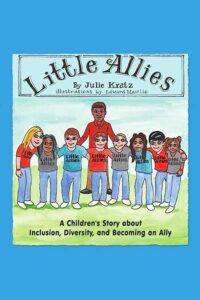
The Little Allies is the children’s book I wrote. It is a collection of stories I have heard from folks with diverse backgrounds and perspectives. It is a little vignette. It is a fourth-grade reading level. If you have anybody that you know in your life from K-5, it is appropriate. You want to read to them when they are younger, and hopefully, they could read to you as they get closer to that reading level.
At the time, my daughter was six. She asked a lot of candid questions. In the summer of 2020, everybody was like, “How do I explain this?” She was six and asking genuinely curious questions. I’m struggling. I’m like, “I do this work for a living. If I’m struggling with this, I bet a lot of parents, especially White parents, are struggling right now.” I’m sitting there crying, trying to explain racial justice. I don’t want to think this sad thing. I want her to feel empowered.
I have a podcast with my partner Simone Morris. It is called the Inclusion School Podcast. We interviewed all these parents, caregivers, and educators about DEI, diversity, equity, and inclusion. You hear the story about the kid that identifies as gender non-binary, uses they and them pronouns, and is misgendered at school. No one knows what to do. What if an ally was there to say, “I’m going to stand with you in this?”
In the book, we talk about a story of a kid being told they don’t belong because of their racial identity. We talk about being a quiet ally. It doesn’t require this savior, especially like, “I’m going to save the day for you.” That is not helpful and sustainable but rather, teaching kids to be empathetic and to sit with the person. If a kid speaks Spanish as their primary language, what if you learned some Spanish and they learned English from you? We could both be smarter instead of that kid feeling othered or less than because of the language their parents taught them in their house. That is not the kid’s fault.
The lesson I have learned and the stories I have heard from Little Allies have been parents, caregivers, and educators learn a lot more from kids than they do. You are not actually doing the teaching when you read the book. They are teaching you. You have to be willing to get schooled by some young kids. There is nothing more vulnerable than that. It is embarrassing sometimes when my kid says things to me. I’m like, “That is deep.” After we talked about racism, she was like, “Mom, this does not make any sense. Who cares what someone’s skin color is?”
She knows this now, and she can’t unknow it, whereas I was taught to be colorblind. Most of us well-intentioned ‘80s and ‘90s kids were taught, “Civil rights solved all that. Women’s rights solved all those problems. We are good. Keep working hard and pull yourself up by those bootstraps. Don’t see color. Don’t talk about it. It doesn’t exist anymore.” For a person of color, that is a part of their identity. Unfortunately, we have constructed this as a social construct. It is not real, but it is real in today’s society. If you don’t talk about it, you can’t solve a problem you can’t discuss.
We need to talk about Diversity, Equity, and Inclusion. You can't solve a problem you can't discuss. Share on XWe have started a nonprofit, LittleAllies.org. You can check it out more. We give educational materials. We donate to organizations that are willing to have this candid conversation with kids, summer camps, and museums. We have partnered with STEM programs over the years. There is a book, discussion guide, a bunch of tools, and activities. We have a great activity book that we built with an elementary school teacher. You can do these activities plug and play. You don’t have to be a DEI expert to guide this conversation. That was all based on my own learning about how hard it was for me and how much I needed the tools myself, even as somebody that is well-versed in this work.
It is an evolution. We are always going to be learning in this space. When we start, you can’t unlearn this as you start to see it. I was unconsciously incompetent. I had no idea what I was not believing and how I was following through on the systemic bias that was out there that I didn’t know. When I started to realize that I cared about other humans, like your daughter mentioned, for all the reasons that we should do the right thing, I realized I could do better.
I needed to live my privilege more honorably and to do it with responsibility and good intentions to put myself out there and be vulnerable. I’m never going to stop learning at this point. It is just one of those things. I don’t have it just right. There have been moments when my daughter and son say, “Dad, you can’t say guys anymore.” I’m like, “I know I keep saying that. It is my weakness. I’m trying to get better at that.”
My son came home from school, and there were questions back about Black Lives Matter versus All Lives Matter and how one of the kids was getting picked on for talking about All Lives Matter without the full context around it. My son was telling everybody, “Everybody, calm down. Let’s hear what he has to say so we can all learn from this.” That is the thing. We have that ability to talk to our kids, and they come back and share it with us. I’m like, “That is phenomenal.”
What happens is we hear these words, and we hear someone’s creating a situation, it becomes divisive. We talked about this a little bit earlier. We say a word and people are reacting versus taking it in to say, “What part am I playing into this word? What am I reacting to? What am I believing? Is this right or wrong? What could I do differently?” My son showed me that day what that means to be open-minded, to get curious, and to step in and not react.
I love that, especially if someone says something problematic. Stay curious a little longer because we go right into judgment as adults. Our brain is wired this way. We are created to make decisions quickly for our survival. When someone says, “All lives matter,” they are not trying to physically attack us. It feels like that though. My blood pressure goes up. I get sweaty. I want to pounce on them. I get all that. That is instinctual. However, if you breathe for a second, get the cortisol level down a notch, and say, “Why do you say that? What do you mean? I disagree. I have a different perspective, but I want to hear yours first.”

One of the most powerful conversations I had was like your son’s story. I’m not perfect at this, but I did have a breakthrough moment with somebody that has a different political belief. Here I was last fall on our school board. It was never meant to be partisan, let alone about DEI, but this is what is happening in our country. My purple district is no different. We have the anti-DEI and pro-DEI slate. All of them are marketing materials. I’m not inventing this. I’m trying to support the pro-DEI for obvious reasons.
I’m at the voting area in the parking lot with this anti-DEI, an older White man which no harm there but doesn’t have school-aged children. It is an interesting situation. I was there for three hours. I’m like, “This is going to be a long afternoon.” Hour one did not go well. There are lots of small talk about the weather and his back pain.
Nothing of substance.
No, we are trying to keep it official. In hour two, things get interesting because I’m like, “I got to take a walk. I got to walk this off.” He was like, “What do you want me to do when one of your liberal constituents comes over here?” He says it like that. I was like, “I’m not aware of this being a political environment. I didn’t think the school board elections were supposed to be bipartisan.” He looks at me. I was like, “Don’t worry, I will come back.”
I walked it off and came back. I was like, “Did anyone come by?” He was like, “No.” I was like, “I want to hear about your platform.” I asked the question and let him talk. He went on for way too long. I listened as well as I could and stayed patient. I was hoping he would return the favor and ask me about our platform. He did not reciprocate.
Hour three comes by. I ask more questions. I plant a couple of seeds of things I have heard, studies I have referenced, and why I care about this. At the end of it, he finally turns to me and goes, “I have never met someone like you before. This is an interesting afternoon. I’m glad I got to meet you today.” I learned so much from that conversation. It didn’t change my beliefs, and I didn’t change his beliefs much either, but he had never talked to someone like me.
That is a problem. We are not talking and listening to each other, much like your story pointed out. What if we could stay curious a little tiny bit longer, broaden someone’s perspective, and plant a seed that someone else comes along and waters? it isn’t to them to grow or not. If we are not trying to give up and judge, there is no point in this work. We can’t do this work and stay judgmental.
That is the whole growth mindset perspective, if we are stuck in our ways, not willing to take on and listen to other perspectives. That is the art, the ability to take those perspectives and make what we have and know better. It is not about throwing everything out. Maybe for some people, you would say, “You are way off the mark.”
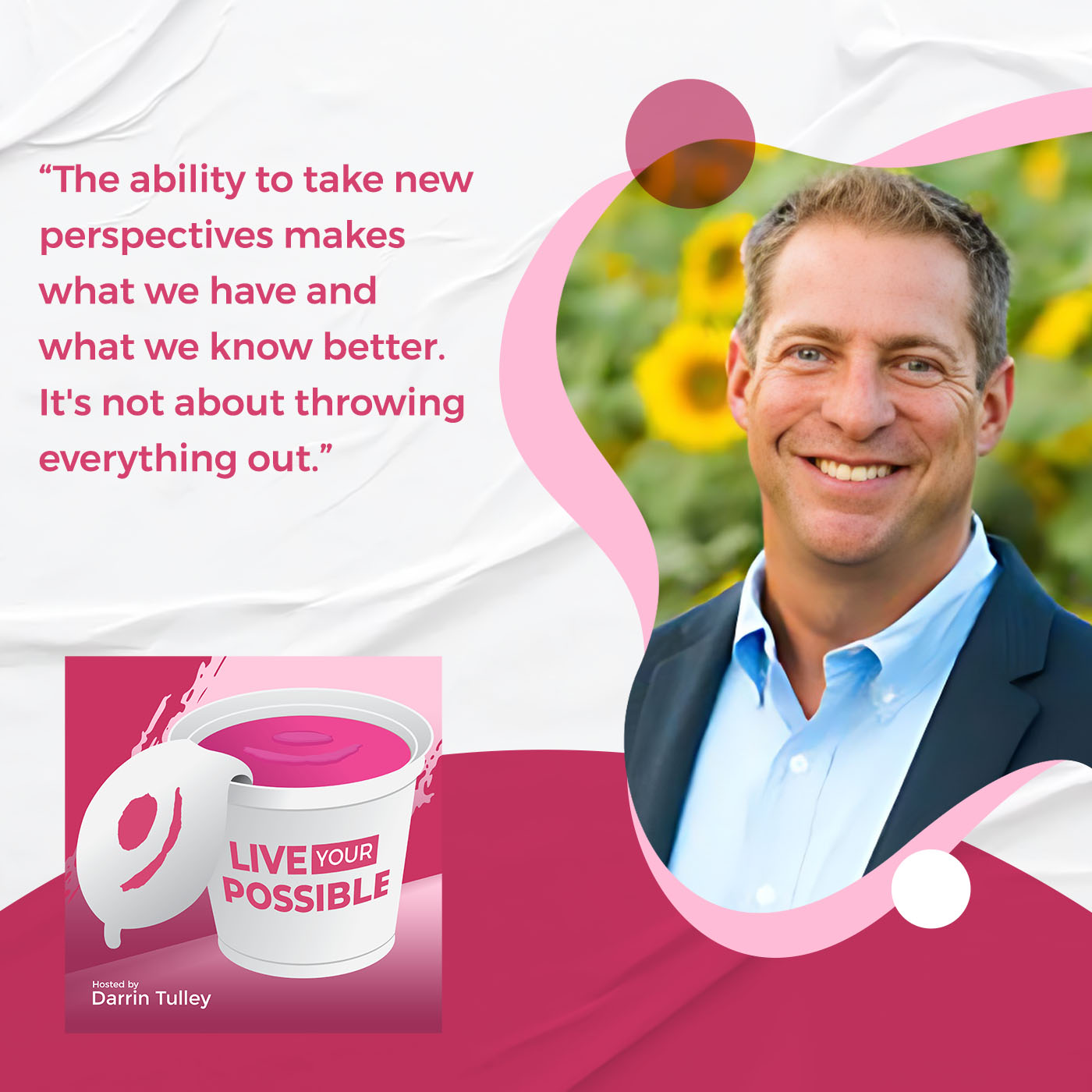
I’m with you. Planting the seeds is a great way to say it. If we could all not bring our emotional selves to react yet care with emotional wanting and being because that is who we are. We are human. We don’t want to get rid of our emotions. We are upfront with our reactions versus working together to come out stronger and emotionally connected.
I feel the weakness too. We get divisive. We don’t want to figure out what the end game is. What is the end game? Are we trying to be better as humans? Are we trying to do good? I can promise you that when I have started to realize the benefits of my awakening, it is much better. I find much more joy. There are more possibilities. In companies and places I have worked, our results are ten times better.
There are many things I was afraid of and I was preserving. So many things I got in the way that I couldn’t even see what was possible. I even use this pink pen all the time as my reminder to be different and to look at and accept differences. I talk about awakening. Am I allowed to say awakening these days? There is so much about the word woke and other things. What is your take on that?
They don’t like any words we use. If you are against diversity and inclusion, it doesn’t matter what language we use. Woke, simply put, was something that was coined by people of color to talk about, “I’m not asleep anymore to systemic issues.”
You raise an interesting point about where we are now and what it will take for other people to wake up. I call it the White male epiphany. Let’s be honest. All the representation and concentration of wealth is in White men’s hands. That is the state of our country and the world. If we don’t engage that demographic in this work, we will not succeed. We have done a crappy job of doing that. I get in a lot of crossfire and trouble when I speak out about that.
People of color don’t like that because I’m a White woman. I’m not blaming White men either. I tick them off because they are like, “I’m not the bad guy.” I’m not saying that, I’m married to a White man. I have lots of White male friends. I interviewed a ton on my podcast about their epiphany moments. We have to put ownership.
If you have power, privilege, and wealth, you need to do a better job of sharing it with other people. That is the expectation we have not cultivated as a society. Instead, we encourage the opposite, “Hoard your resources. Work hard and keep it all.” I don’t know about you, but why this work makes me better is when I reach a certain point in my business, as we did two years ago, we had a profitable record here. I don’t need that money. Other people need that money. I have an obligation to give that money back to the people that need it the most.
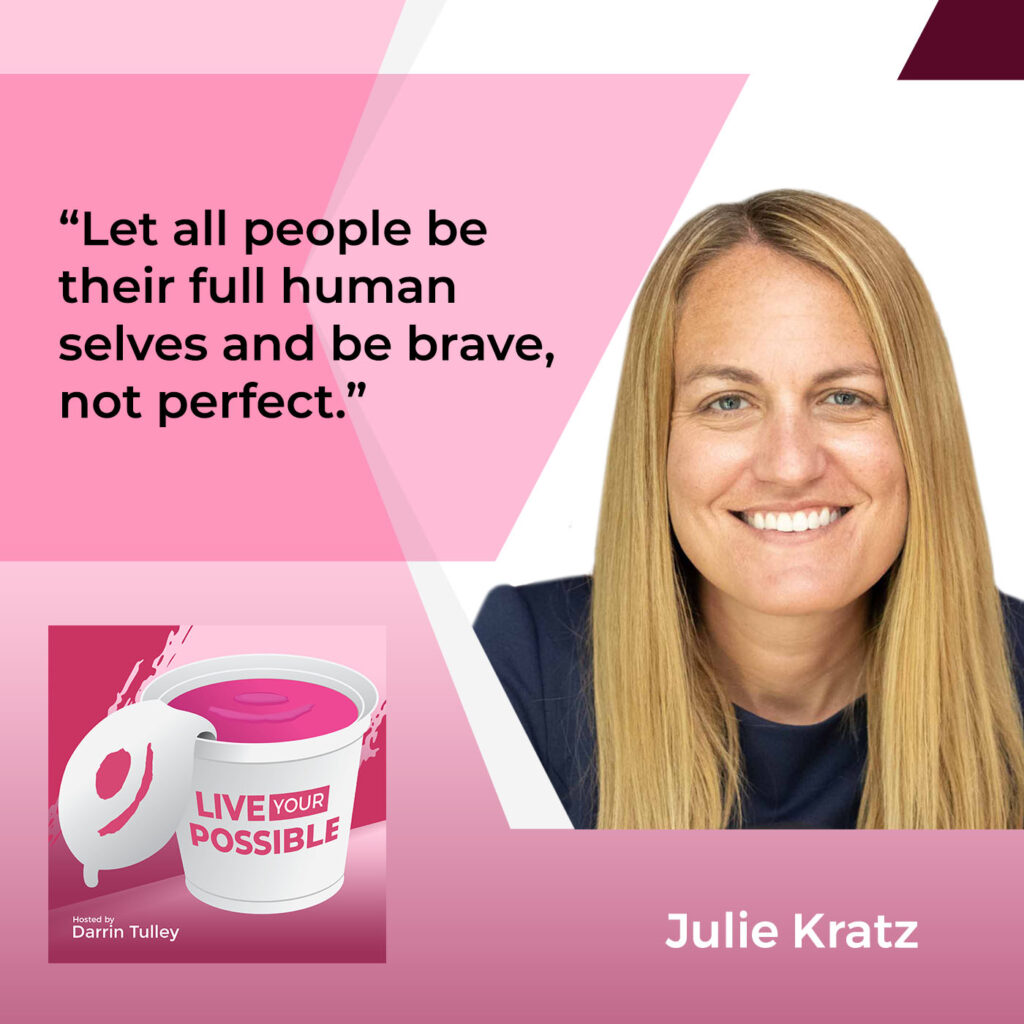
I did a bunch of research. That is when I wrote Little Allies. We partnered with other nonprofits. We weren’t getting traction for the Little Allies materials. That is why we built our own, which caused me a lot of angst because I didn’t want to create something else, but there was nothing else that I wanted to create. I couldn’t get support from other organizations that are focused on their own mission.
I’m not perfect, but I love to create a Robinhood scenario where these huge companies are making record profits, even in the throes of a recession or whatever we are in with economic uncertainty. Most companies and CEOs are making way more money than they used to. Frontline workers are making less when we adjust for inflation. Why not take the money from the wealthiest bottom lines and put it in the hands of those that need the tools, resources, and information the most? That is my one try at being a better human. That feels a heck of a lot better than getting a paycheck and being a curmudgeon.
You are aligned with the thought of the whole movement around ESG. The thoughts of investing and supporting environmental, social, governance, associations, or societies. I have been reading more about effective altruism, how that is calculated, and depending on who puts the calculations together on where money or investing goes to support different areas. I always find that as an interesting topic as well.
I love your book because it is good for adults too, and your point about the kids teaching the adults. Translate that to adult allyship, how that work, and the services you are providing with Next Pivot Point. What are you doing? How are you helping people to normalize or feel like they are contributing in different ways? I believe it is a two-way street. I’d love to know your opinion on that too.
To wrap back quickly to your point on ESG, Environmental Social Governance is a thing. It is not going away. Europe is about to pass legislation that will mandate US companies doing business in Europe to do DEI reporting. I don’t like to scare people, but this is real and it is coming. Get with the program. The Little Allies’ work is for the parent. Even me reading it with my daughter. She’s like, “What is that? I think this.” I read the book in her third-grade class a few weeks ago. Oh my God, the question they ask. They are right out of the get-go, “How does somebody have two moms?” This is where adults get scared. They want to know the biological. It is not what she is asking. The answer was simple. All families are different.
Everyone started talking about how different their families were, which was a whole different conversation I was unprepared for. Kids aren’t judging. They are not being mean. They are asking questions they genuinely don’t understand. What if, as adults, we ask questions we genuinely do not have the answers to? Think about the last time you asked a question you didn’t have an idea of what the response would be. It is not that often.
We ask questions as adults that we are confirming what we think we already know. Kids don’t do that. That is why they are like, “Why?” I’m in the car with my daughter. It is the tenth question in a car ride. It is hard to stay in that mindset because my brain is short-circuiting and not trying to create new mental pathways. It just reinforces the ones that I already have to save energy. She doesn’t think that way.
This highlights what we said earlier about curiosity versus judgment if we could stay that way as allies. I know this sounds simple but in practice, it is difficult. Try to mentally…pause. Anyone that meditates knows how hard it is to meditate. Get your thoughts to stop. Stop to figure out what this person is all about. Do that with at least one person and let me know how it goes. I promise you will learn something you didn’t know. You will build trust and make the relationship stronger. Hopefully it is with someone that matters in your life. If you work together, you are going to have a stronger relationship and get more done together. Why don’t we take these moments to get to know each other as human beings? At the end of the day, we are a social species. We are wired for connection. Anyone that follows Brené Brown’s work knows that.
One of the most horrible things we can do to human beings is to isolate them. That is why we had so much suicide and alcoholism during the pandemic because people were isolated. We need each other. We can’t survive on our own. At the same time, when we want to push and create these walls against each other as humans, it is the last thing we need. We need each other.
I’m not an education expert, but I know the power of younger people. I remember being a young person thinking this way. I wish I could go back to my inner child, but I can’t. What if we could spend more time having these conversations with kids? It is powerful stuff. The best conversation I have had with young people is side by side. We go for a walk. I remember a client of mine sharing. He was like, “My mom used to grill me as a teenager. She got me in the car.” You are side by side, looking in the same direction. It is a lot easier to have a candid conversation when you are not adversarial looking at each other. If you want to do it, have a couple of questions in your back pocket.
In the Inclusion School Podcast, we interview experts since we have a treasure trove of resources on that website, books, and videos. There are some great short videos you can watch with your kids that are educational. You can say, “What do you think, I wonder? I wonder what you thought about that. I wonder. I’m curious. What do you think?” You don’t have to have formulaic responses or robotic questions. That is not what kids want anyway. Be real. Don’t have a script. Just jump in.
It takes a few minutes because kids will inadvertently change the subject. My daughter will be like, “What is for dinner?” I’m like, “We were on the cusp of something.” It is a continued conversation. We have Black History Month and Women’s History Month. We do this big parade, and we tune it out the rest of the year. Keep having the conversation, and it is a slow trip. Every few weeks, bring something up. It is not that difficult.
I love the I wonder. That transcends to being an amazing human and enjoy and the things that we care about. As you are talking and I’m listening to learn how best to talk about certain things. We are divisive about certain words. Maybe it is a trigger word or it is a belief. Even those words to say, “Even though I don’t agree with you, Julie, I’m interested to learn more. Tell me more. I’m curious. I wonder what that looks like for you. I wonder how you got here with that.”
It is the same thing as talking with other adults. I love how you are talking about allyship in that manner. You are not saying this has to be some type of DEI event that has to be part of some program. This can happen tomorrow, today, or next week, not as part of a room because we are in training. This is about being a good human being.
I’m convinced that, unless you are a psychopath, you get out of bed in the morning wanting to do good and help other people. You ask 99% of people, “What inspires you? What do you want to do?” It always goes back to a common theme of helping someone in some way. Rarely are people like, “I want to make as much money as possible.” That might be a motivator for some. For most people, you want to help people.
If you want to be helpful, think about how you can be more inclusive. Think about how you could be a better human. Unfortunately, the DEI work has gotten polarizing and stigmatized. There is a pushback on it. People don’t like the acronym. Throw out the acronym. Tell me whatever word you want to use. I don’t give a rip, honestly. Many of my corporate clients are retreating to inclusion. Fine, we will talk about inclusion. They will find something wrong with that too. I can’t fathom what that would be, but it will be polarizing. Embrace the path. We want to be better human beings.
Think about how you can be more inclusive. Think about how you could be a better human. Share on XHow do we get out of the way of the words? It is something that is a huge takeaway, to not react to the words that we think they mean and inquire and get curious. I think about privilege, power, inclusion, awakening or woke, and unconscious bias. I know you are a certified trainer on that. I had an unconscious bias and didn’t realize it, but if I’m someone that wants to explore a little bit more, is there a simple way or do you have a tip for us to think about it? Maybe there is a website to go to test this out. I love to get your perspective. We could talk about it more in a follow-up episode on other things we want to do.
Good for you for being aware of your biases. Most people aren’t. Most people have them. We have biases in some areas of our life. I always highly recommend it. It is not a perfect resource but it is free. It is anonymous and Harvard backs it. It can’t be terrible. It is Implicit.Harvard.edu. That is the implicit association test. It is called Project Implicit. It is a measurement of unconscious bias.
There are twelve different categories, age, race, religion, LGBTQ, and gender. Most people have a bias in at least one of those areas. I did. I have a racial bias. I associate White people with power and Black people with oppression. That is a product of my lived experience. I have to manage that. That is up to me to manage that. That is not up to anybody else. I get to check myself. One of the ways I check myself is by diversifying the people I spend time with.
I’m making sure I have robust people of color I follow on social media, close social circles, and my business. I’m making sure that when I see bias in myself and others, I practice the good old flip it to test it. It’s one of my favorite tools, credit to Kristen Pressner’s work. If this was an opposite gender, race, or ethnicity, would it still make sense? Would we still say, “Where are you from?”
When people ask me where I’m from, they want to know where I’m from. When I say Ohio, it suffices. When someone of a different ethnicity born here is asked questions like, “Where are you really from?” That is a different lived experience than the one I’m having. Acknowledging that, flip it to test it, and diversify the folks you spend time with. Take the assessment, get to know your bias, and watch out for it. When it shows up at the moment, don’t be hard on yourself. Be kind to yourself. Forgive yourself, “There it is. I got to watch out for that.”
This is ingrained in me as a young person. My mom was well-intentioned but had some racist tendencies. We go into a neighborhood of people of color, what do you do? Lock the doors. I was taught from a young age that condition response of lock the doors when I saw people of color. I would have checked that. I got to check that still today. I got automatic locks. I tried not to default to that conditioning, but I felt myself put my finger on the lock button. I don’t do that in White neighborhoods. I got to rein that in. It doesn’t make me a bad person, but it certainly is an opportunity for me to be better.
I can relate, and I’m sure others can relate. That is a good example of not beating ourselves up over it and saying, “I could be better. I need to acknowledge it. I need to check in on that.” The key is learning. That is getting curious. That is taking perspective to do something about it and to grow from it, which is phenomenal. It is taking these tests you are interested in. Go out and do that. I will put some links to these tests out on the show notes.
You are doing many amazing things. You have books. You have a bunch of services that you are providing with the different corporate folks around the country and internationally. I love to hear from you. What do you focus on these days? How can folks reach out to you and connect with you? I will certainly put some links to your website, the wonderful work you are doing, and a copy of the book. I love for you to outline what you are up to and how people can reach out to you.
Next Pivot Point is our website and all our social media handles. LinkedIn is the best place to follow me on social. It seems to be the healthy alternative on social media nowadays. Julie Kratz, follow me there. What I strive to do with our corporate clients is focus on four key buckets. One is assessment. You got to know your starting place. We got to know what outcomes you are trying to drive for it to be successful and strategic.
That leads to our strategy work, where we will help you co-create a roadmap and a plan based on why this is important and what you are trying to accomplish. We will also educate folks. There’s so much about it because education is 80% of the journey. We have workshops, live programs, keynotes, and that type of thing, and the exact conversations we have now. These are the tips we give in our practical action-oriented training and speaking events.
The last piece is the leadership team. We know this work doesn’t work unless leaders are involved. I do a lot of coaching with C-Suite leaders that can be candid in a group setting about, “I don’t get this. I don’t know how to respond to this.” The most common request I’m getting in my one-on-one coaching is, “How do I have this conversation with somebody who doesn’t get it and doesn’t want to get it? How do I listen because I disagree with everything you are saying?”
I have to be their leader. This is a challenge. If you are facing those issues, there are tools and resources. It is not impossible. It is one conversation at a time. These conversations matter. We need to keep having them. If you are in a position of power and privilege of leadership, it is an obligation for you to care about this. Your team expects you to care about this. Young people will hold you accountable for this. They will be voting with their employment and dollars. The runways are running out. Get with it.
DEI conversations matter. We need to keep having them. If you're in a position of power, privilege, and leadership, it's an obligation for you to care about this. Share on XI appreciate the courage you are putting out there with this work and getting folks to start to open their eyes a little bit differently. I appreciate your vulnerability. As you are sharing, you don’t have it just right yet. You are an expert in this space. It is a good example to lead that way because we are all on this journey. Continue looking for ways to get better to open our minds and say, “We need to do better. We got to learn, relearn, and do better together.” I love you are doing that in the capacity and what you are doing. There are many organizations that could use that assessment and understand what could be done and what is possible after that.
That is a big miss if you don’t assess, and we didn’t do that. People went guns blazing. Sorry for the analogy. I could have found a better one there. In 2020, it was like, “We are going to do all this stuff.” No one stopped to think about what we were trying to achieve. What are the gaps? Making a corporate statement, I’m not sure solves any particular problem other than making you look good.
We need to challenge things and measure. I appreciate you underscoring that because if you haven’t measured DEI at your organization, that is an important thing to do that everyone needs to be doing. You will be held accountable for doing that, whether it is ESG or mandates coming down the road globally. It is part of the reality of doing business now.
Don’t do it just to check the box. Looking at what is possible and the results can follow. When folks are genuinely doing the work collectively, there are many companies that are doing it right. I was talking to Otis Elevator. They are doing all those things the right way. They are expanding and looking to become leadership neutral as far as gender equality by 2030, which they are at almost 40%. Companies are showing the way. It is possible. They could do it.
They have better business results. It is a competitive advantage. Their people are engaged. There are countless studies that show the importance of this work. It is great to see organizations doing it. They are consistent in their intentions over time because you have to be for it to work.
Thanks for saying all that and for being a leader in this space. I appreciate you joining this show. I admire all the work you are doing. If there is any way I could partner with you, let me know. This is work we all need to do. We all need to step in to make a difference. With the world fast approaching with AI and other elements of the world, it is going to continue to change. We need to change with it. Thanks for being on the show.
Thanks for having me.
—
Julie is truly an expert in this space and is in the middle of our world, trying to do better and get it right. No matter where you are on your journey to be more inclusive and welcoming, be honest about your greatest purpose and how you are stacking up against that each and every day. If it is to make the world better or to serve or help all humans grow with possibilities, consider these ideas from this show.
Watch Julie’s TEDx about gender equality. Comment on her talk on YouTube, or share it with someone else where you can learn and grow together with an open mind and heart as you share ideas and discuss them. As you watch this talk, think of a female in your life that means something special to you. It might open your eyes a little bit differently.
2) Seek out someone to learn from that is different than your usual path. Consider listening to your kids differently. Kids on teams you may coach or people you meet in your day. Be open to ideas or responses that help you unlearn something and relearn or expand your thinking. Let them know you heard them and how they impacted you. You both will grow from that experience, I promise.
3) Try an entire day without challenging other people. Stand in to listen with the words Julie suggests to state things like, “I’m curious to hear more. Tell me more about how you got to this place or things that support this belief you are having.” Engage in understanding without combating, reacting, or judging.
4) Go judgment free. Judgment is one of the weaknesses of our day. Judgment of each other is one of the gaps we need to overcome to have a more harmonious place where we can all live and thrive. Check it out. Catch yourself if you are judging others or even yourself.
5) Be true to yourself without pushing away people and possibilities. Once I figured this out, my life opened up with endless opportunities and transcendent joy.
6) Feel free to reach out to Julia or me if you would like us to help you transform in ways that will inspire personal and organizational growth and ways you dream of. Take a personal commitment. I signed up for the Little Allies program to look at life in a different way. In the meantime, keep taking small steps of action toward your highest purpose as your happy authentic self and live your possible.
Important Links
- Julie Kratz– LinkedIn
- Next Pivot Point
- Pivot Point
- Girls Who Code
- Brave, Not Perfect
- Little Allies
- Inclusion School Podcast
- LittleAllies.org
- Implicit.Harvard.edu
- Julie’s TEDx – YouTube
- https://NextPivotPoint.com/podcast/
- https://YouTu.be/9CVizdhVI5g
- https://www.Entrepreneur.com/growing-a-business/how-do-i-enact-real-dei-change-in-my-business-heres-how/443372?_ga=2.157252795.1892536716.1683595950-2000623605.1683595950
- https://IgniteHappy.com/Live-Your-Possible/
About Julie Kratz
 Julie Kratz is a highly-acclaimed TEDx speaker and inclusive leadership trainer who led teams and produced results in corporate America. After experiencing many career “pivot points” of her own, she started her own speaking business with the goal of helping leaders be more inclusive. Promoting diversity, inclusion, and allyship in the workplace, Julie helps organizations foster more inclusive environments. She is a frequent keynote speaker, podcast host, and executive coach. She holds an MBA from the Kelley School of Business at Indiana University, is a Certified Master Coach, and is a certified unconscious bias trainer.
Julie Kratz is a highly-acclaimed TEDx speaker and inclusive leadership trainer who led teams and produced results in corporate America. After experiencing many career “pivot points” of her own, she started her own speaking business with the goal of helping leaders be more inclusive. Promoting diversity, inclusion, and allyship in the workplace, Julie helps organizations foster more inclusive environments. She is a frequent keynote speaker, podcast host, and executive coach. She holds an MBA from the Kelley School of Business at Indiana University, is a Certified Master Coach, and is a certified unconscious bias trainer.
Julie has been published by Entrepreneur, CNBC, TEDx, The Forum On Workplace Inclusion, and more. She is the author of 6 books including Allyship in Action: 10 Strategies for Living Inclusively, Lead Like an Ally: A Journey Through Corporate America with Strategies to Facilitate Inclusion, a children’s book Little Allies, ONE: How Male Allies Support Women for Gender Equality, and more.

